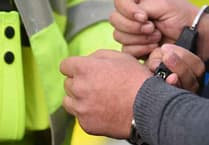A scheme to develop two new helicopter landing pads at a North Wales hospital – prompted by a surge in summer tourism has been given the green light.
Gwynedd Council's planning committee unanimously agreed to a proposal to remove an existing helicopter landing site (HLS) and to construct two new landing pads at Ysbyty Gwynedd in Bangor, when it met yesterday, Monday, 11 September.
It comes after an assessment of the existing service by Betsi Cadwaladr University Health Board. It had reported “the need to upgrade and improve the provision for landing helicopters” at the Penrhosgarnedd site in Gwynedd.
The “existing service has been very busy, particularly taking into account the fact that the county’s population doubles during the summer months, as well as the presence of Eryri National Park in the area”.
A planning document had stated from 1 December, 2020 to 30 November, 2021, the 444 bed hospital had accepted 158 patients via Wales Air Ambulance / Bristow Search and Rescue. “Of this total, approximately 60 per cent were HEMS / Air Ambulance tasks whilst the remaining 40 per cent were SAR aircraft operations.”
Plans state: “The new facility would offer more capacity to receive patients and would create a landing facility for a broader range of helicopters, 24 hours a day, 365 days a year.”
A Heliport Feasibility Report by the Civil Aviation Authority International stated that the hospital trust served a resident population of approximately 250,000. But due to the proximity to the Eryri national park “this particular area is a popular holiday destination and the population essentially doubles during the summer months,” it said.
The landing area is located approximately 150m to the east of the hospital, on a plot of sloped land, elevated site above the city. According to the Civil Aviation Authority, it “offers very good flight paths into and out of the hospital grounds.”
Work on the site would include removing the existing helicopter landing pad, creating two new landing areas by re-grading the landscape and creating two embankments with a circular shaped flat plot behind them.
It also meant the installation of hard standings for landing pads, surface water drainage work, installation of new illuminated landing barriers, erection of security fencing, creation of enclosures in order to maintain the helicopters and associated engineering work.
The plan was not considered to have “detrimental impact” on health, safety or the amenities of the residents of local properties or area in general.
There was “potential for noise and disturbance to emanate from this type of facility,” the plan noted, “but it was unlikely to be significantly worse than what already happens”.
The site is approximately 200m from the nearest residential houses. Following a public consultation no responses were received during the statutory advertising period and there were no objections.
The site is was also partly located within the buffer zone of Crug Goetre Uchaf (CN376) a registered monument mound dating to prehistoric times, but it was “not believed that there will be any impact on the layout of the monument.
“When considering the status of Bangor as a sub-regional centre, and the site’s existing use as the main health treatment location in North West Wales, it is believed that this facility is completely appropriate for the nature of the location and status of the settlement,” a planning report stated.
It was considered “acceptable” under planning policies, subject to conditions and not considered “contrary to any relevant planning policy within the LDP.” It was ” appropriate for the site and that would help achieve an objective of strategic importance,” the meeting heard.
Planning officers found the plan “acceptable” and recommended the committee members accept it. In a vote, the committee were all in favour, Councillor Huw Wyn Jones proposed accept the officers’ recommendations, seconded by Gareth Coj Parry. All were in favour.




.jpeg?width=209&height=140&crop=209:145,smart&quality=75)
Comments
This article has no comments yet. Be the first to leave a comment.